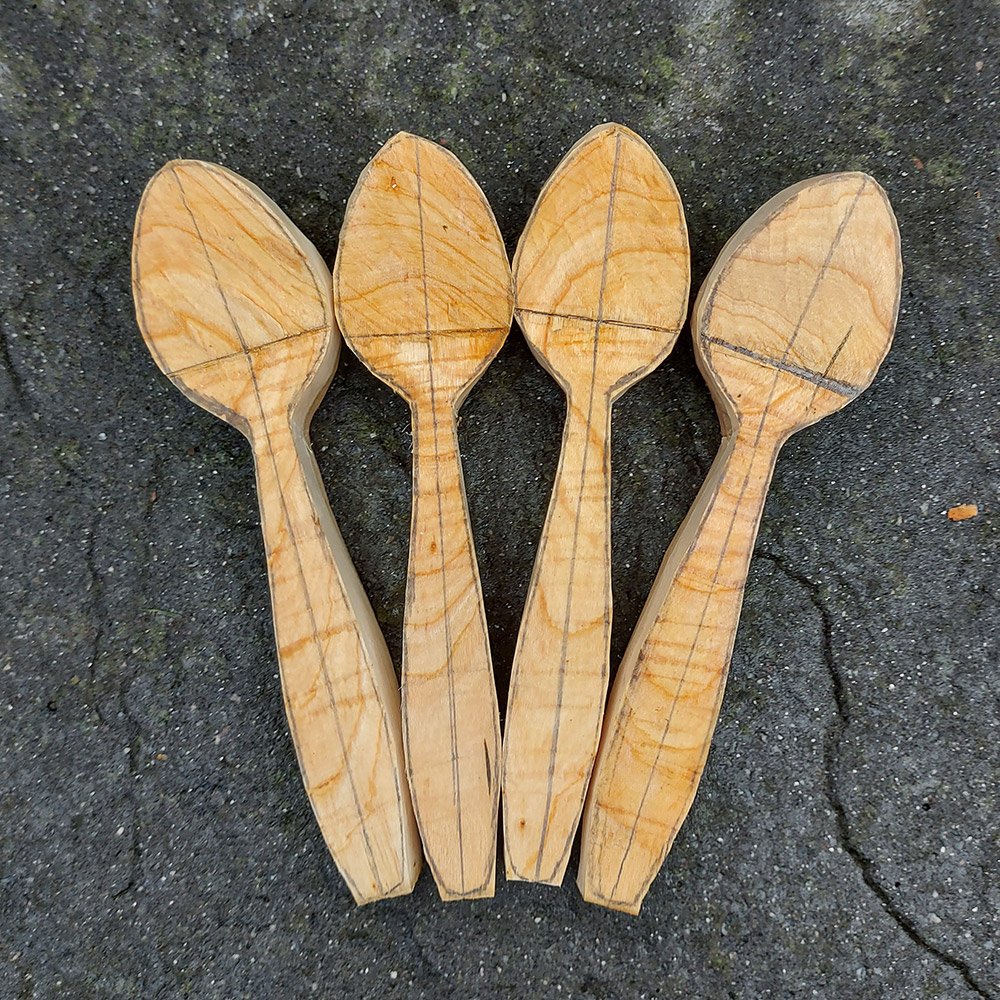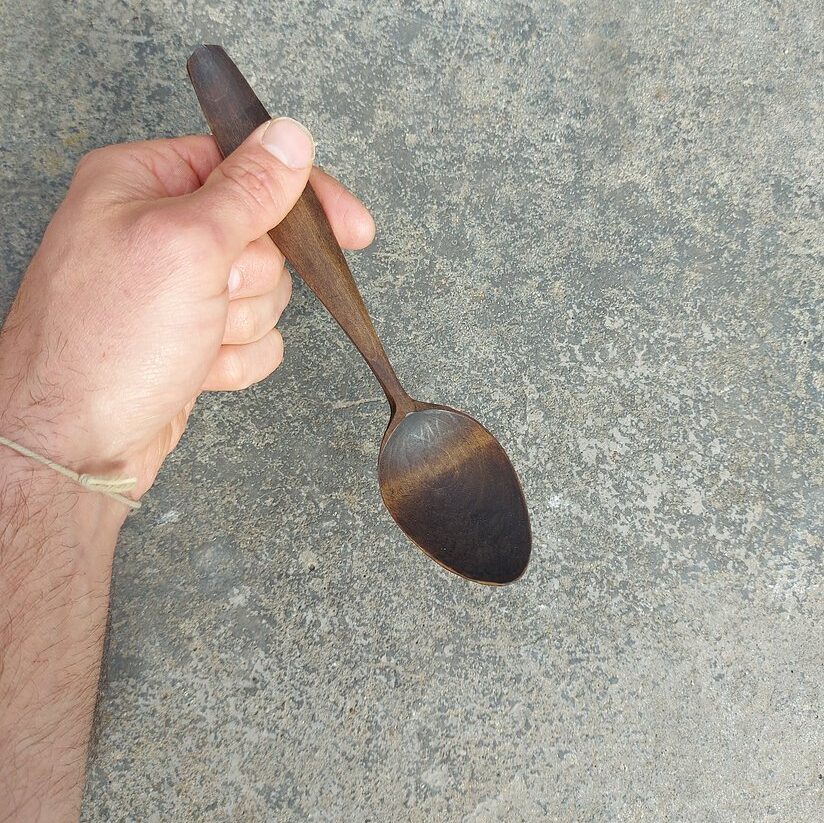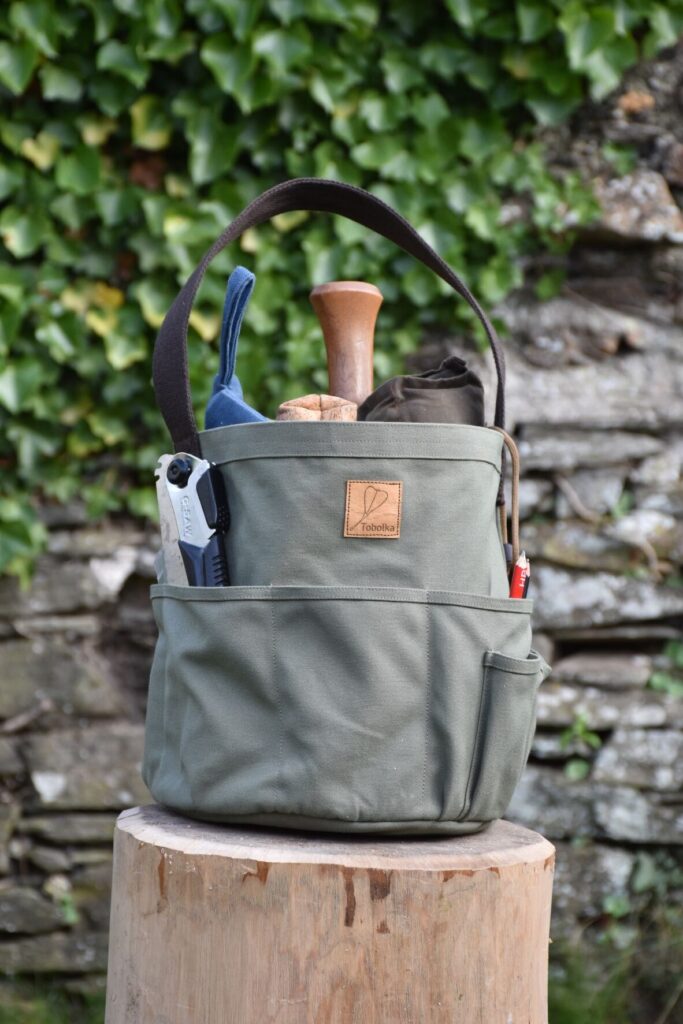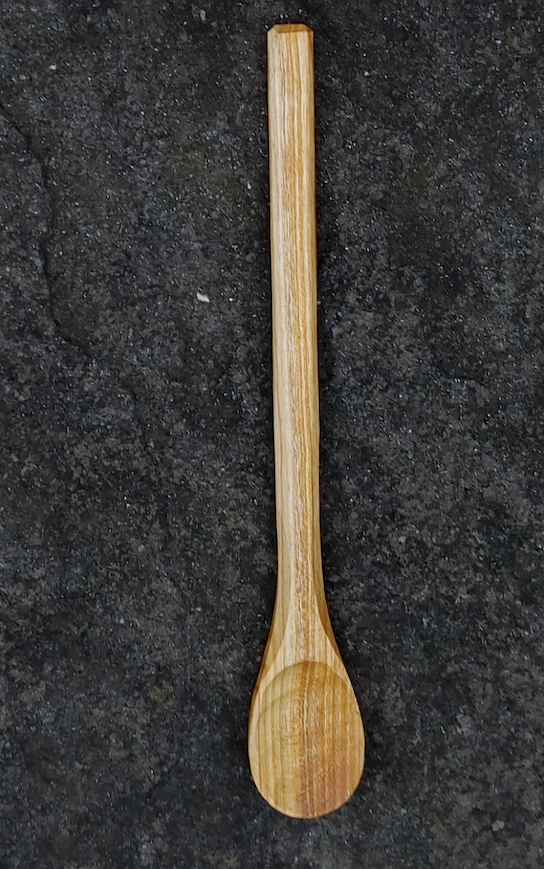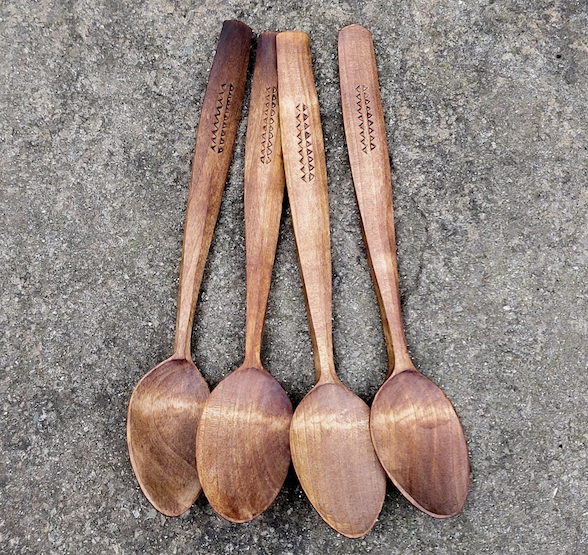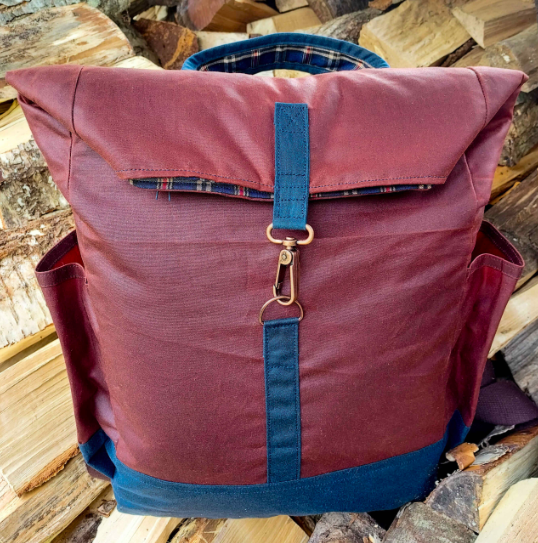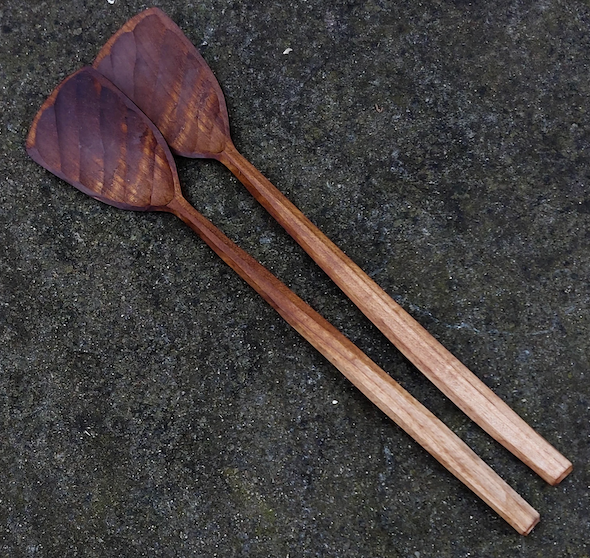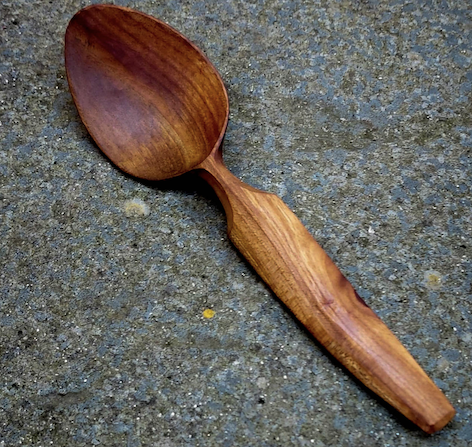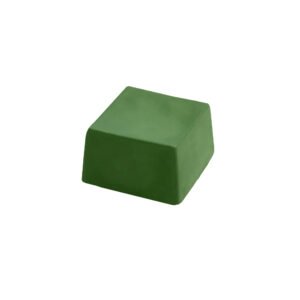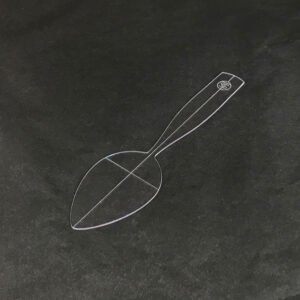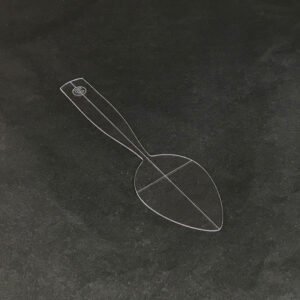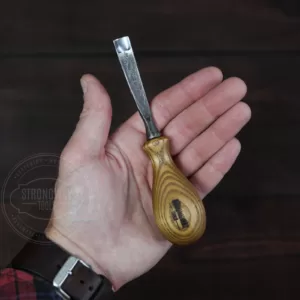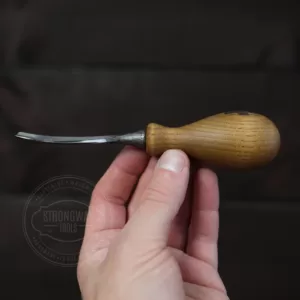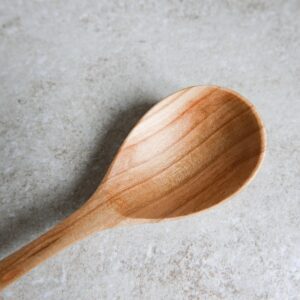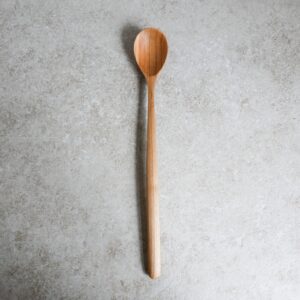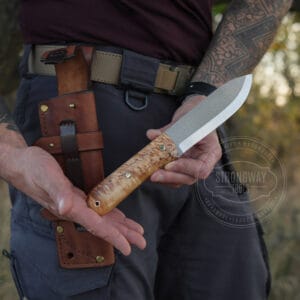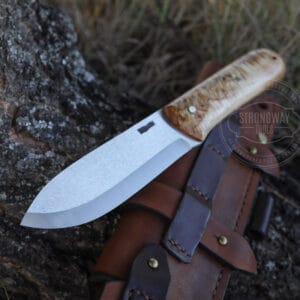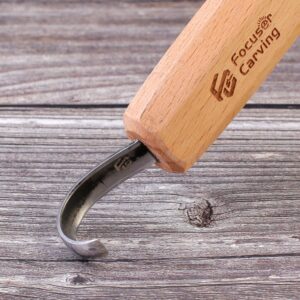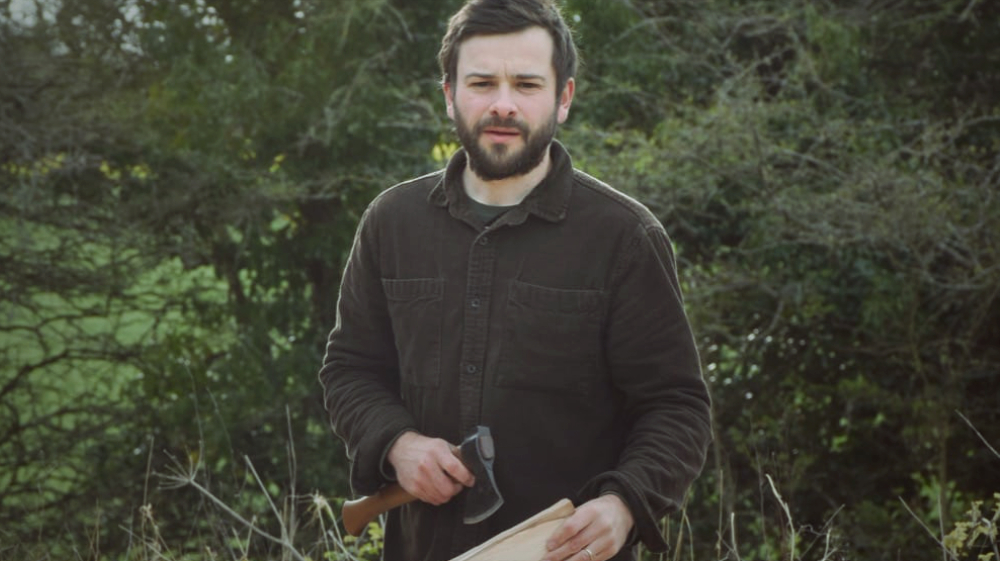
Alex Finberg is a forest school teacher and he runs workshops in spoon carving, bowl carving, whittling and shrink pot making in South Devon. A while ago I sent him some questions so that we get to know a little more about him and his craft.
How long have you been into spoon carving and how you got hooked? Please describe your first spoon carving attempt and where and when you carved your favourite spoon?
I started spoon carving 7 years ago.
The first spoon I carved was actually pretty good. I say that because I then got progressively worse the more I tried to learn and imitate other spoons! It took me a good while to progress and make a half decent spoon. But my first spoon was a birch baby spoon I carved for my son when I lived in London.
It was flat with no crank, but the bowl was a nice shape, the handle was round, and it turned out pretty nicely, unfortunately it met its end likely in the compost bin, I’m not very sentimental about past spoons as I’m always making more, but a first spoon is it’s own milestone and I’ll always remember it.
Do you carve at home? Where do you carve most often and why is that?
I carve at home, in the woods locally and in a workshop local to me called the Devon Green Wood Centre. I’m spread about a fair bit but often I carve in my garden as its the most convenient option. Carving with the company of the Cornish carvers or at Spoonfest is where I am often most content as crafting in community is a joy best shared.
Please share with all of us a spoon carving tip and tell us about the how and the why.
Be intentional and purposeful with your carving. What I mean by that is each cut your tool makes should have a purpose and a goal. Is it a roughing cut, a hollowing cut or a refining cut? Stop carving on autopilot and focus your attention on making the cleanest crispest cuts with a direct purpose. It is amazing how many bad habits we can develop if we are not self critical and willing to deconstruct and rebuild our technique.
What the three most important tools in your carving tool kit?
Axe, Spoon Knife and Straight Knife.
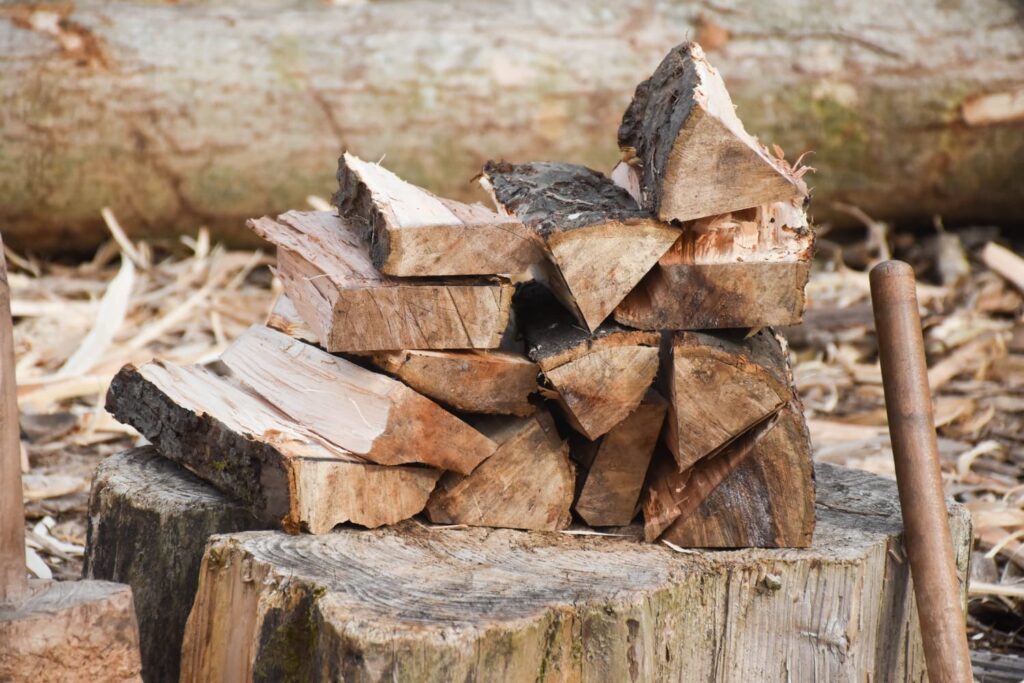
What is your most favourite part when carving a spoon and why?
I do enjoy burnishing and oiling spoons when they’re finished, its the final reward, but equally its wonderful axing out billets of fresh green wood, and tucking straight in and carving a few spoons from start to finish.
When I’m really engaged on a particular shape then I enter a flow state of carving where everything else fades away and its just me and the spoon and a rambling string of thoughts, punctuated by birdsong or a stream!
Its often hard to articulate but there is something very special about the relationship between creativity, well-being, mindfulness – it is a deeply human and ancient occupation carving wood.
How do you like to finish your spoons? Do you burnish?
I burnish and oil them, sometimes bake them in the oven, and I enjoy experimenting with natural paints and stains.
Do you decorate your spoons?
I do use a variety of milk paints and linseed oil paints, chip carving and other decorations.
How do you approach sharpening and what are the benefits of keeping your tools sharp?
Sharp tools are undoubtedly one of the keys to developing your carving and producing really enjoyable spoons. You cannot circumvent sharpening as blunt tools will not just produce a substandard finish on your spoons, they will lead to the development of poor technique as you compensate for the lack of ‘bite’ of the edge with a change of hand or wrist angle. This is particularly true for axe carving. It is dangerous to carve with a blunt axe. A sharp tool is after all a safe tool and there are few things more enjoyable than a laser sharp knife through green wood.
I have 2 roughing knives and 2 or 3 finishing knives, the finishing knives are flat over hollow and reserved for the process of refining the spoon. The hollow grinds are put in on a tormek and the flats on a waterstone. The roughing knives are flat scandi grinds which I tend to sharpen when needed back to 300 grit, 1000 grit and strop. These get the most wear and I favour a flat grind which tends to hold up to the rigours of repetitive carving. My Hans Karlsson axe was originally hollow ground it is now a flat 30 degree bevel for the same reason. I do also have a restored Kent pattern axe with a convex bevel I use for roughing out larger blanks and removing the bark from timber from gritty environments. Elwell steel never ceases to amaze me!
I attempt to strop my tools every 15 minutes. This may sound excessive and it doesn’t always happen! But it really supports the maintenance of a sharp edge and lessens the need for repetitive sharpening.
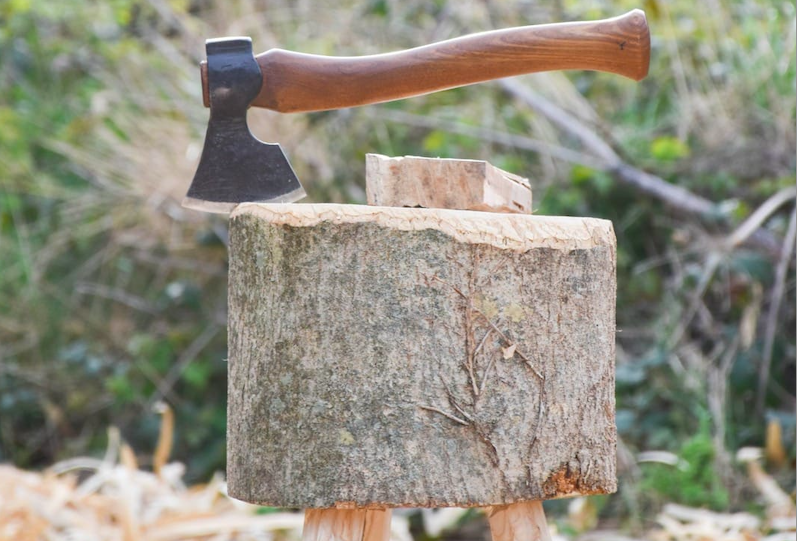
Where do you find green wood for carving? Any tips?
I live in Devon, UK where there is an abundant supply of green wood. I source my wood from landowners, tree surgeons and friends. Always ask permission – pay the landowner in kindness or cash, whichever they prefer – with a spoon as thanks and you can build a lasting relationship and a steady supply of green wood.
If you live in a Town or City, get a list of all the local tree surgeons, call them one by one explaining your favoured species, diameter of wood (7 inches and above in diameter) 3 foot lengths (or whatever length you can lift and transport), straight trunk or crooks etc. Explain you are a woodworker and need fresh green wood felled within the last 3 months (you might need to alter the assumption that you are a woodturner and want seasoned wood) and explain you can collect and pay cash on collection. You need to make it worth their while not to turn the timber into wood chip or firewood. Save their phone numbers and you can send out a generic text whenever you’re in need of a new supply!
What do you think about making your spoon blanks available to other carvers?
I am happy to make my spoon blanks available to other carvers. I do not ‘copyright’ my spoon designs, after all a spoon is a spoon, and the evolution of a spoons shape is not something we can claim ownership of. I do though appreciate being acknowledged if someone uses my templates or copies the spoons I carve, please feel free to do so!
How you minimise the risk of an accident while carving a spoon?
Incorrect technique will lead to cutting yourself. No matter how experienced a carver you are, at some point using incorrect technique will cause injury and Led Zeppelin will be right once again: it will be Nobody’s Fault But Mine.
Be calm, lay down tools when stressed, create space to carve and never rush – edge tools can be a harsh teachers!
Do you have a particular philosophy about the craft of spoon carving and the hand carved wooden spoon?
A wooden spoon is a nice , not to big , not to expensive, not very dirty, not to laborious , art project… that calms me down , gives me silence, and let me chase the perfect form , floating lines and forms , simple beauty , with a communication with a “living” material with amazing beauty by itself.
What are your thoughts on collaborative work among makers in general?
I’m all for it. What I would like here in the UK (and worldwide) is closer relationships and networks between landowners, land-workers, indigenous peoples, coppice workers, arborists and craftspeople – as a collective where we can share our knowledge skills and crucially participate in using our natural resources well.
As a collective we must develop a voice which can be heard amongst the clamour of the climate conversation – a voice which can champion the knowledge and skills of people working closely with nature, and deliver a message which advocates for increasing our planets biodiversity through the practice of truly regenerative land management and genuinely sustainable products.
Why is the crank an important spoon design feature? What’s your process for creating the crank on your spoons? How much is enough crank?
I saw a stop cut and then axe down to it. I change the angle and position of the crank depending on the design of the spoon, either at the back of the bowl or the 3/4 mark. An inch is usually a good amount of crank but it wholly depends on the billet you’re working with – and there are limits – too much crank turns a spoon into a nose banger.
Website: alexfinberg.co.uk
Instagram: @alex.finberg
By Alex Finberg


